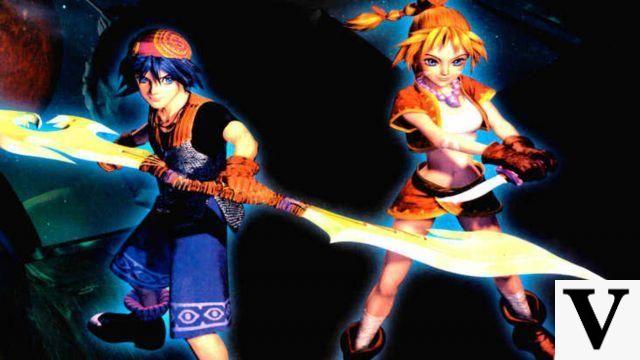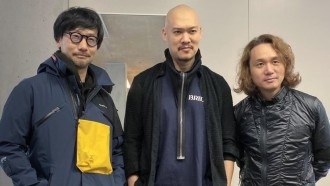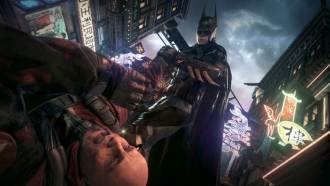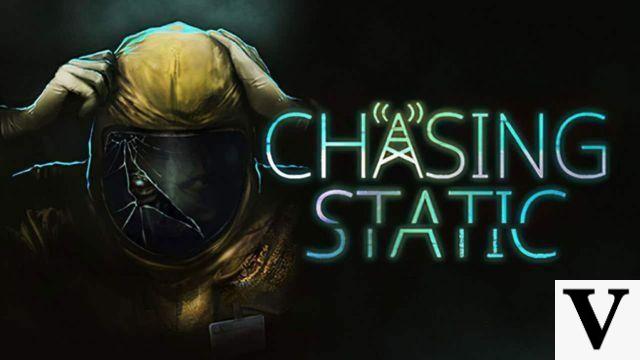Developed by Tango Softworks and published by Bethesda, Ghostwire Tokyo has proven to be extremely peculiar since its reveal. After the excellent titles of The Evil Within franchise, Tango decided to drink from horror in a different way.
Released for PlayStation 5 and PC, Ghostwire Tokyo presents a very interesting proposal, but it contains problems in the way everything was put into practice. Bizarre, speaking in a positive way, the game stumbles by offering a lot of repetition and presenting certain problems, but it also doesn't turn out to be a bad journey.
Martha is Dead: Controversial, tormenting and in very bad taste [Review]
bizarre and interesting
![Ghostwire Tokyo: Bizarre, Quirky, and Repetitive [Review]](/images/posts/7f058f8b1b304aeb7ff287e62904ac69-0.jpg)
Once again capitalizing on its familiarity with horror, Tango Gameworks has utilized many elements of the genre in an adventure that is action-oriented. As it is a supernatural plot, which involves spirits walking through a ghost town, exorcism and more, the title already has a certain facility to fit horror characteristics into its peculiar proposal.
The bizarreness of Ghostwire Tokyo goes far beyond a city where the entire population has disappeared, leaving only lost spirits in this world. It also goes beyond the fact that we have two main characters, as young Akito is somehow possessed by KK, which offers a relationship that is very reminiscent of Johnny Silverhand and V in Cyberpunk 2077.
Ghostwire Tokyo is bizarre for a number of reasons, which include the sinister appearance of enemies, the grotesque creatures that bosses become in combat, animals that communicate with you through thought, and more. What I mean is that Ghostwire Tokyo embraces the sinister in a very peculiar way, putting the player on a journey filled with absurd moments that somehow are well introduced and make sense. With that, all this weirdness is really interesting, since it works for the plot and is well used in creating a differentiated atmosphere.
a direct plot
It is important to say that Ghostwire Tokyo has a very straightforward plot, which lasts about eight to ten hours, on the highest difficulties, if you only focus on the main missions. The plot that resolves itself quickly is one of the main reasons the game is somewhat short, since there are no detours to finish situations, develop characters or make a real deepening of the plot.
In its final moments, the title is still able to deliver something a little deeper, in an excerpt that is well-written and can touch the player, but that doesn't take away from the fact that the title makes little effort to deliver a plot that isn't more than just ok.
![Ghostwire Tokyo: Bizarre, Quirky, and Repetitive [Review]](/images/posts/7f058f8b1b304aeb7ff287e62904ac69-1.jpg)
Still, I felt that Akito and KK's relationship somehow manages to be positive, overcoming the problems caused by such a shallow plot. With KK being more experienced, knowing more about the supernatural, the character is a constant voice during the journey, even outside of cutscenes. The spirit of tips in combat reminds you to learn new skills and is as participatory as Akito, the "owner of the body". Although I don't have the time, nor the writing quality, for the relationship between them to be on the same level as Johnny Silverhand and V, in many moments this unlikely friendship ended up reminding me of what we saw in Cyberpunk 2077, in a way.
The villain Hannya, much for his look, also manages to be interesting and present a menacing posture, with some moments in which his speeches deliver the apex of writing in Ghostwire. Thus, although shallow, the plot manages to rely on some pillars that keep the player interested to check the outcome of everything.
a lot of repetition
Ghostwire Tokyo is unfortunately a repetitive game. To be honest, the best way to enjoy the title and get a positive opinion may be to simply focus on the main plot, ignoring the idea of spending more time on secondary objectives scattered around the map.
The big problem is that the title is already repetitive in its structure, forcing the player to always follow a pattern to advance. What we have here is an avalanche of Torii Gates to purify, with this serving as the great foundation of the game. By purifying a Torii Gate, you can dispel the supernatural mist from the region, thus gaining access to new objectives and activities. Akito and KK spend the entire game having to purify gates to proceed towards their next objective, which ends up quite tiring.
![Ghostwire Tokyo: Bizarre, Quirky, and Repetitive [Review]](/images/posts/7f058f8b1b304aeb7ff287e62904ac69-2.jpg)
With the structure of the game being repetitive by itself, we still have other elements that are not very varied either. With a combat that proves to be fun in the first few hours, the game unfortunately slips by not knowing how to give variety to the confrontations. Even after releasing all the elements available for weaving, you will feel that the combats always follow the same pattern, with almost no variety of moves and abilities to use. You have one charged and one simple attack for each of the three elements, which shows very little during gameplay.
It has to be said that Ghostwire Tokyo's combat isn't bad, and it's even interesting to combine the elements, but after a few hours of gameplay the glow fades. The enemies at least prove to be interesting, with the design being the highlight. In addition, the show of color provided by the character's powers is also a plus point, with each confrontation being visually satisfying.
Atmosphere is right
![Ghostwire Tokyo: Bizarre, Quirky, and Repetitive [Review]](/images/posts/7f058f8b1b304aeb7ff287e62904ac69-3.jpg)
An extremely positive point of the title is its setting. Tokyo is offered in a very interesting way to the player, either by the visual of the city or by the smallest details that are scattered throughout all the tales. While the character modeling during cutscenes leaves a lot to be desired by today's standards, Tokyo's visuals are in many instances extremely satisfying. The art direction is certainly one of the biggest hits of the title and most likely will be among the competitors in the awards of the season.
Lighting, very well modeled objects, evidently created environments with great care and other features make Ghostwire a very robust game visually speaking. The interiors of buildings and houses are dense and immersive, almost always with something sinister accompanying the player. On the streets, the situation is no different and exploring Tokyo becomes more interesting that way, although the activities and possibilities are not very inviting.
bosses are problem
![Ghostwire Tokyo: Bizarre, Quirky, and Repetitive [Review]](/images/posts/7f058f8b1b304aeb7ff287e62904ac69-4.jpg)
Bosses are another problem with the game, as we don't have any combat worthy of mention here. If the design of the bosses is something that excites the player for these confrontations, with each of them becoming creatures that fit very well with the bizarre proposal of the title, on the other hand the execution of these confrontations is very unsatisfactory.
While some of these fights are really problematic and make the player hope they end soon, as there's not much fun there, others at least manage to stay within the acceptable, but never approaching a quality that deserves much praise.
Repetition is also an issue here again. These confrontations are all very similar, as well as your movements and the enemy's movements are also very far from anything that could be considered varied. In addition, the attacks of these opponents prove to be uninteresting and even less creative. Defeating them means repeating their same abilities over and over again, in a period of time that can seem too long, with little, if any, shine being seen in these moments of the game.
The verdict
Ghostwire Tokyo is a repetitive game in everything it proposes, thus being a title that delivers much less than it could. The game doesn't seem to be able to better develop its ideas and proposals, although much of what is seen here is quite promising.
The title also has its successes, being able to offer an interesting journey to players who manage to ignore the repetition, especially if there is a focus only on the main missions. The direct plot ends up being a hit, since it is not necessary to spend a lot of time in the replay of the game to finish the adventure. The combat, which could be much better used and expanded, is able to work for a while, and supported by the good ambiance, it can also make ending the journey be seen as something satisfying for the player, but not much more than that.
Ghostwire: Tokyo
7.0 Pros- excellent ambiance
- Enemy and boss design is cool
- Visually beautiful combat
- Tokyo view is great
- Direct plot ends up working
- very repetitive structure
- Combat could be more varied
- Character modeling leaves something to be desired
- Boss clashes are uninspired
Analysis done with a PS5 copy kindly provided by Bethesda*

























